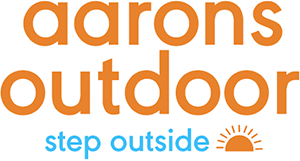
Playgrounds are more than just play spaces; they are arenas where children learn, grow, and form connections with the world around them. An inclusive playground transcends the boundaries of traditional design, creating a space where children of all abilities can experience the joy and freedom of play. This article delves into the nuances of designing inclusive and accessible playground spaces, emphasising the importance of accessibility and engagement for every child.
Through thoughtful design, playgrounds can become inclusive environments that nurture children’s social, emotional, and physical development. This entails not only adhering to stringent accessibility standards but also selecting equipment that caters to a diverse range of needs. By prioritising safety and inclusivity, designers can transform public spaces into hubs of learning and growth for all children.
Embarking on the journey to create such an environment requires a deep understanding of child development, a commitment to safety, and a dedication to fostering community inclusion. The following sections will provide a comprehensive guide to crafting playgrounds that welcome every child, ensuring a safe, engaging, and inclusive play experience that supports their development and well-being.
Why More Inclusive Play Spaces Matter
Play is universally understood as a critical component of childhood development. Through play, children explore the world, learn social skills, and develop physically. Inclusive playgrounds take this understanding a step further, ensuring every child, regardless of ability, has the opportunity to participate in and benefit from play.
Social integration is a cornerstone of inclusive play areas. They act as melting pots where diversity is not just accepted but celebrated. Here, children learn the values of empathy, cooperation, and respect as they interact with peers who may have different abilities. The playground becomes a microcosm of society, teaching inclusivity from the earliest stages of childhood.
From a developmental perspective, an accessible and inclusive playground provides a range of sensory experiences that cater to children with varying needs. A child with physical disabilities can experience the thrill of movement on a wheelchair-accessible swing. In contrast, a child with sensory processing disorders might find comfort in a quiet corner designed for contemplation and calm.
Statistics underscore the impact of inclusive play on child development. According to a study by Virtual Lab School, environments that engage a variety of senses enhance physical skills like balance and coordination and promote cognitive and emotional growth. Child development experts assert that when play environments are accessible to all, they stimulate an inclusive mindset that carries into adulthood, laying the groundwork for a more accepting society.
The importance of inclusive and accessible playgrounds is also reflected in their impact on community inclusion. These spaces provide a common ground where families from different backgrounds can unite, fostering a sense of belonging and community cohesion. The National Institutes of Health report revealed that inclusive playgrounds can significantly increase community participation rates for families with children with disabilities.
In short, inclusive playgrounds are more than just about providing access to play equipment. They are about crafting environments that embrace everyone, promoting equal opportunities for growth, learning, and joy. They send a powerful message: every child has the right to play, to be accepted, and to be included in the tapestry of community life.
Accessibility Standards Explained
Creating an inclusive playground starts with thoroughly understanding the accessibility standards in place to guide their design. In Australia, these standards are outlined in the Disability (Access to Premises – Buildings) Standards 2010, which fall under the broader scope of the Disability Discrimination Act 1992. These regulations serve as a blueprint for ensuring public spaces are navigable, safe, and welcoming for individuals with disabilities.
The Australian Standards for Accessibility, specifically AS 1428.1-2009, provide detailed criteria for public space design, including pathways, surface treatments, and equipment specifications. Compliance with these standards is not merely a legal formality but a commitment to the rights of all individuals to participate fully in public life.
Key components of these standards include unobstructed paths of travel, accessible entry points, and firm and slip-resistant surfaces. For playgrounds, this translates to smooth transitions between different play areas, ramps suitable for wheelchair users, and tactile indicators to assist those with visual impairments.

Playground equipment must also adhere to these standards, considering the varying ways children may use the equipment. For instance, transfer platforms and support rails must be incorporated for those who use their own mobility aids. Additionally, the layout must allow caregivers to maintain visual contact with children, ensuring a safe and secure environment.
Further to the legal requirements, best practices in inclusive design recommend going beyond the minimum standards to create truly inclusive spaces. This involves considering how children engage with their environment and incorporating features that stimulate all senses, promoting cognitive and physical development.
In addition to the physical aspects of inclusive playground design, accessibility standards also encompass the need for clear signage and the use of symbols to communicate information effectively to users with varying comprehension and language ability levels.
Adherence to these standards reflects a commitment to social equity, ensuring that playgrounds are not just physically accessible but also welcoming and usable for all children. This level of inclusivity is essential, as it recognises the diverse spectrum of abilities and supports the fundamental right to play in an engaging environment safely.
Choosing Inclusive Equipment
Selecting the right equipment is paramount during an inclusive playground project. The goal is to furnish the space with versatile, safe, and stimulating pieces for children with a wide range of abilities. Each piece of equipment should be carefully chosen to provide opportunities for all children to develop physical skills, engage socially, and enjoy play to the fullest extent possible.
Swings are a classic playground staple and, when a correctly designed inclusive playground, can accommodate children who require additional support. Some swings come with high backs and harnesses to provide stability for children who may not have the upper body strength to support themselves. Swings with a bucket seat design allow younger children and those with limited motor control to join the fun safely.

Another key piece of inclusive equipment is the merry-go-round, which can be flush with the ground to allow children using wheelchairs to roll on and off easily. They can also be designed with seats and handrails to assist children with balancing issues.
Sensory play panels are also an integral part of an inclusive playground. These panels can include various textures, bright colours, and interactive elements designed to be reachable from different heights and to be engaging for children with sensory processing disorders.
When it comes to climbing structures, those with graduated difficulty levels can provide a challenge for all ability levels. Ramps and transfer stations can be included to ensure that children who use mobility aids can access higher levels of the structure.
Rubber surfacing is another element that enhances the accessibility of playground equipment. This surfacing is not only shock-absorbing, reducing the risk of injury from falls, but it is also wheelchair friendly, unlike traditional sand or bark chips.
In Australia, several suppliers offer a variety of inclusive playground equipment. When selecting a supplier, it is important to consider not only the range of products on offer but also their compliance with Australian safety standards for playground equipment, AS 4685.1-2014, and their commitment to durability and aftercare services.
Inclusive playground equipment should be selected with the understanding that play is a universal right. The equipment should invite participation, encourage social interaction, and offer all children a fun and rewarding experience.
Designing for Safety and Access
Safety and access are two of the most crucial considerations when designing an inclusive playground. These elements ensure that the environment is not only reachable and usable by children with diverse abilities but also minimises risk and allows for a positive play experience for all playground users.
Safety Considerations

Safety in playground design involves more than just preventing accidents; it ensures that play areas are supportive environments where children can challenge themselves without undue risk. Here are key safety features to consider:
- Surfacing: The ground should be covered with impact-absorbing materials, such as rubber or engineered wood fibre, which cushion falls and provide a stable surface for wheelchairs and walking aids.
- Equipment Spacing: Adequate spacing between play structures is essential to prevent overcrowding and collisions. It also allows caregivers to navigate and supervise the area easily.
- Visibility: Play areas should be designed so caregivers have clear lines of sight to supervise children. This is particularly important for those with hearing impairments or cognitive conditions who may not easily communicate distress.
- Containment: Fences or natural barriers can help to contain the play area, preventing children from wandering off and ensuring they remain within a safe perimeter.
Access Considerations
Access is about removing barriers to participation. An inclusive playground should cater to a variety of physical and sensory needs, with features such as:
- Ramps and Wide Paths: Ramps with gentle inclines and wide paths allow for wheelchair access and are also helpful for individuals with strollers or walking aids.
- Transfer Platforms: These are essential for children who can move from their wheelchairs onto play structures. They should be of an appropriate height with clear space for easy movement.
- Varied Equipment Options: Including a wide range of play options ensures that children of all abilities have choices. For example, combining high-energy activities and quieter, more contemplative spaces can cater to different preferences and needs.
- Tactile Elements: Introducing tactile ground indicators and a variety of textures within the playground can enhance the experience for children with visual impairments and provide sensory stimulation.
- Shaded Areas: Shaded spaces protect all children from sun exposure, which is especially important for children who may be more susceptible to heat due to certain medications or conditions.
- Accessible Facilities: Amenities such as toilets and water fountains should be accessible, with features like grab rails and appropriate height for children in wheelchairs.
In Australia, the design and construction of playgrounds are also governed by standards such as AS 4685, which specifies general safety requirements and test methods. Compliance with these standards helps designers create spaces that are not only inclusive but also align with the highest safety principles.
Play’s Role in Child Growth
The role of play in child development cannot be overstated. Through play, children learn about themselves and the world around them. Play is an essential part of healthy growth, influencing various domains of development, including physical, cognitive, emotional, and social growth.
Physical Development
During play, children engage in activities that require motor skills, coordination, and physical exertion. Climbing, swinging, and running contribute to muscle development, fine and gross motor skills, and overall fitness. The physical challenges presented in a stimulating play environment encourage children to push their limits, helping to improve balance, agility, and even bone density.

Cognitive Growth
Playground activities are rife with opportunities for cognitive challenges. Problem-solving skills are honed when children figure out how to navigate a climbing net or decide the best way to build a sandcastle. Play through pretend play also stimulates imagination and creativity, allowing children to explore different scenarios and roles. This type of play can enhance cognitive flexibility and executive function skills, such as planning and self-regulation.
Emotional Development
Play allows children of all ages and abilities to express and manage their feelings. It can be a safe outlet for emotions, providing opportunities for children to work through frustrations or fears in a controlled environment. Mastery of new skills on the playground can also boost self-esteem and resilience, contributing to a positive sense of self.
Social Skills
Inclusive playgrounds are social hubs where children learn to interact with others and play together. These interactions can teach empathy, cooperation, and negotiation skills. Children learn to take turns, share equipment, and communicate their ideas and feelings. For many children, playgrounds are where friendships form and social boundaries are explored and understood.
Sensory Stimulation
Playgrounds offer a wide array of sensory experiences critical for children’s growth. Sensory play can include tactile experiences with different materials, auditory stimulation through musical equipment, and visual engagement with bright colours and shapes. For children with sensory processing issues or for when children experience sensory overload, such as those on the autism spectrum, an inclusive playground removes barriers and provides sensory-rich activities that are modulated to prevent overstimulation.
Language Development
Social interactions during play also facilitate language development and stimulate creative thinking. Children of all ages communicate their thoughts and needs, negotiate roles, and follow complex instructions during games. This communication is crucial for vocabulary expansion and developing speech and language skills.
Inclusivity and Play
Exciting inclusive play activities and environments consider all these aspects of growth, ensuring that every child has access to play opportunities that stimulate development across these domains. They are designed to be universally appealing and accessible, recognising that each child grows and learns uniquely.
Get Expert Help with Your Design
Are you ready to turn the vision of an inclusive playground into a reality? Our team of experienced designers is here to help. At Aaron’s Outdoor, we understand the profound impact of a well-designed play space on a child’s development and the community’s inclusivity.
We’ll work with you to create a playground that fits your specific needs, space, and budget while ensuring compliance with all relevant safety and accessibility standards.
To create inclusive playgrounds is a rewarding investment in the well-being and development of all children. It’s about building a community space where every child can explore, learn, and grow through play. With our expert guidance, you can transform your vision into a dynamic and safe playground that will serve as a beacon of joy and inclusion in your community.
Contact us today to start the journey towards an inclusive play space that celebrates diversity, encourages growth, and fosters a sense of belonging for every child. Let’s create an inclusive space where play has no boundaries!





